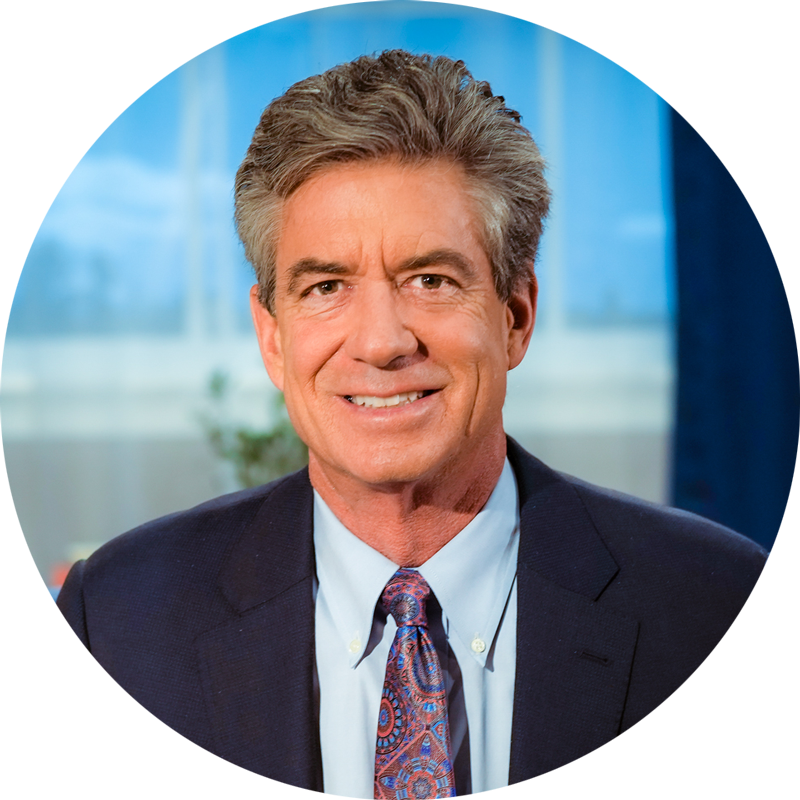The Media Got COVID Wrong… But Investors Got It Right
- The mainstream media has nothing but gloom-and-doom predictions about a possible second wave of the coronavirus.
- But, as Alexander Green explains today, investors who ignored their predictions have capitalized on a historic rally in the markets.
Like me, you’re probably tired of hearing each day about “the massive disconnect” between the real economy and the stock market.
The so-called experts declaring this don’t understand how markets work – or how the mainstream media does.
Let’s start with the press, which delivers the world through a dark prism of negativity, 24 hours a day, seven days a week.
Good news, beneficial developments and positive trends are either underreported or not covered at all.
Click here to watch Alexander Green’s latest video update.
Instead we get an unending litany of sad stories, tragic events and depressing realities.
This is not an accurate representation of the world we live in – the pandemic notwithstanding – where the vast majority of people are living longer, healthier, safer, richer, freer lives than ever before.
Take the coronavirus, for example.
Virtually everything the mainstream media told us about it has turned out to be exaggerated, alarmist or just plain wrong.
The virus is less deadly, less transmissible and less of an economic threat than sensationalist reporting led us to believe initially.
Don’t get me wrong. The coronavirus is a genuine health hazard, but primarily for the elderly and people with preexisting conditions.
About 80% of Americans who have died of COVID-19 are over age 65. The median age is 80.
(Even still, most people over the age of 65 who are in generally good health are unlikely to die or even get seriously ill from the virus.)
In California and Florida, the fatality risk for those under 65 is about equal to the risk of driving 17 miles a day. Practically negligible, in other words.
That’s why so many states have taken the sensible view of reopening – with social distancing and masks – to protect the most vulnerable members of society.
The market crashed in the first quarter when investors believed the media’s alarmist claims.
But it rallied strongly as new data failed to support them.
It was inevitable, of course, that when states reopened there would be a spike in coronavirus cases.
This is partly due to a dramatic increase in testing, however.
The areas of greatest infection tend to be concentrated facilities, like prisons, nursing homes and meatpacking plants.
Some skeptics don’t understand why the market isn’t discounting a “second wave” of infections that will force another economic shutdown.
The smart money – dead right so far – doesn’t believe that will happen.
As I’ve reported before, three companies are moving into Phase 3 trials with coronavirus vaccines this month. Almost certainly, at least one will be available this year.
(Moderna predicts that its will be available for emergency authorization this year – and has already ramped up manufacturing to produce over a billion doses.)
And there are now three proven treatments for COVID-19: dexamethasone (a cheap, widely available steroid), remdesivir (a broad-spectrum antiviral developed by Gilead Sciences) and convalescent plasma therapy, which involves transferring a component of the blood of recovered patients to sick ones.
Here’s the bottom line…
Investors try to gauge what lies ahead, approximately six to nine months out. (Any further than that is simply too foggy to see.)
We’ve experienced a tremendous bounce off the March lows because they see states reopening, businesses rehiring, consumers spending and millions of researchers hard at work on a coronavirus therapy and vaccine.
Combine that with ultra-low interest rates, cheap energy, and massive monetary and fiscal stimulus and you have not a dystopia of sickness, business closures, and economic contraction ahead but a rapid return to “normal.”
That’s why the market rally has become much broader in recent weeks. More than 97% of the stocks in the S&P 500 were trading above their 50-day moving average earlier this month.
The market anticipating a return to normal doesn’t guarantee that it will happen, of course. If developments take a turn for the worse, the market will quickly correct.
(In fact, that would be an ordinary development even if things didn’t take a turn for the worse.)
Ignore the talking heads in the media.
No individual – no matter how impressive his or her degrees or awards – is smarter than the hundreds of millions of investors who are risking their hard-earned dollars in the market.
And what they are betting on – to the stunned disbelief of “journalists” and other opinion makers nationwide – is a rapid and powerful economic recovery.
About Alexander Green
Alexander Green is the Chief Investment Strategist of The Oxford Club, the world’s largest financial fellowship. For 16 years, Alex worked as an investment advisor, research analyst and portfolio manager on Wall Street. After developing his extensive knowledge and achieving financial independence, he retired at the age of 43.
Since then, he has been living “the second half of his life.” He runs The Oxford Communiqué, one of the most highly regarded publications in the industry. He also operates three fast-paced trading services: The Momentum Alert, The Insider Alert and Oxford Microcap Trader. In addition, he writes for Liberty Through Wealth, a free daily e-letter focused on financial freedom.
Alex is also the author of four New York Times bestselling books: The Gone Fishin’ Portfolio: Get Wise, Get Wealthy… and Get On With Your Life; The Secret of Shelter Island: Money and What Matters; Beyond Wealth: The Road Map to a Rich Life; and An Embarrassment of Riches: Tapping Into the World’s Greatest Legacy of Wealth.







